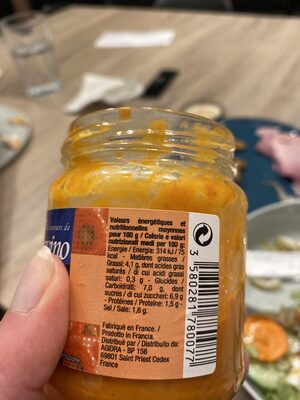Crème de poivrons - Les saveurs de savino - 180 g
This product page is not complete. You can help to complete it by editing it and adding more data from the photos we have, or by taking more photos using the app for Android or iPhone/iPad. Thank you!
×
Barcode: 3580281780077 (EAN / EAN-13)
Common name: Pâte à base de poivrons
Quantity: 180 g
Packaging: Glass, fr:Pot en verre
Brands: Les saveurs de savino
Categories: Spreads, Salted spreads, fr:Crèmes de poivrons
Labels, certifications, awards:
Green Dot, Made in France
Manufacturing or processing places: France
Stores: Super U
Countries where sold: France
Matching with your preferences
Environment
Packaging
Transportation
Report a problem
Data sources
Product added on by kalepom
Last edit of product page on by spotter.
Product page also edited by amadja, beniben, date-limite-app, kiliweb, openfoodfacts-contributors, packbot.







